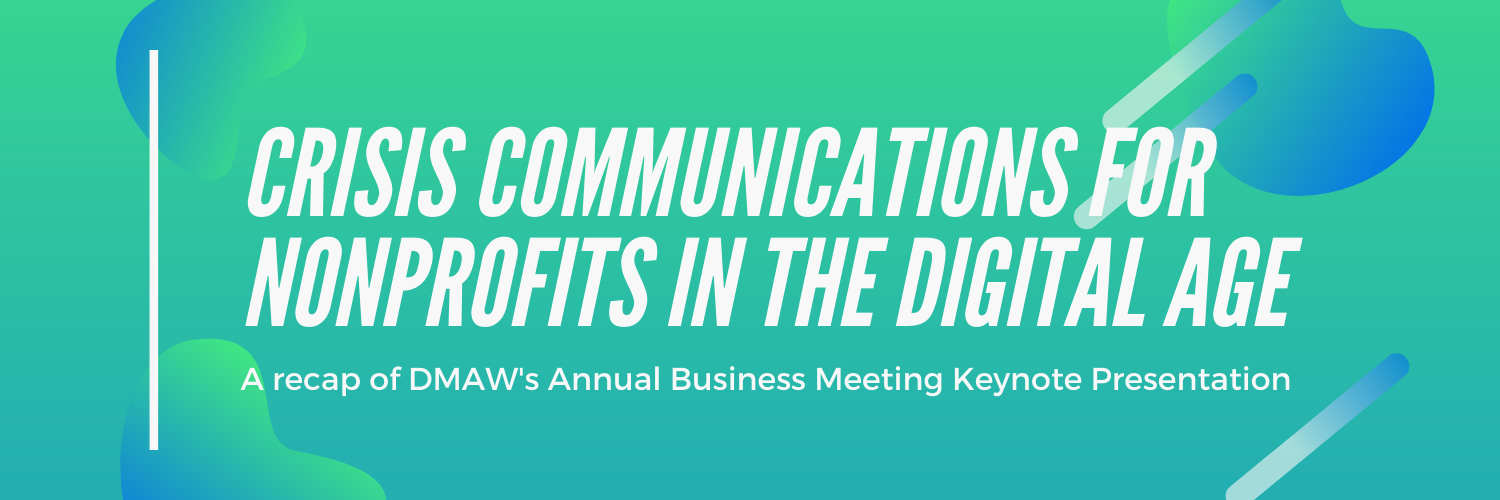Crisis Communications for Nonprofits in the Digital Age

If you’re like me you might have wondered why at the Annual Business Meeting of the Direct Marketing Association of Washington, our keynote speakers were speaking on crisis communications as opposed to, one might be forgiven for assuming, direct marketing.
But, when you dig into the outcomes of a crisis – it is clear that every dusty corner of an organization is affected when a crisis hits. Moments of crisis pull the focus from business as usual and can have significant effects on an organization’s brand. And, all of this affects direct response marketing.
Steven Nardizzi and Richard Levick had a rousing and informative conversation on the wide-ranging challenges of large-scale organizational crises. Nardizzi’s crisis communications experience is hard won – having weathered the maelstrom of the accusations against Wounded Warrior Project in 2016. Levick has represented key players in crisis moments in a variety of industries and crises from the BP oil spill to the #metoo movement.
Their experiences and advice were focused on large scale personal and organizational crises— the kind of crises that most organizations will never have to face. All of their excellent advice also applies to the more common organizational crisis as well as moments of crisis that are not all negative.
An organization’s founder passes away suddenly. A supportive effort that an organization didn’t start and can’t control goes viral (think the Ice Bucket Challenge). A natural disaster occurs at or near an organization’s headquarters or key service delivery location. An influencer spokesperson affiliated with the organization faces a personal scandal. A successful program outcome makes headlines or goes viral.
These are all more common crises that organizations face, but ones that organizations often haven’t planned for.
Large or small, positive or negative, it is critical for all parts of an organization to be on the same page for any key crisis moment. And the way to make that possible is through planning. The process of developing a crisis plan is well documented, but even with the plethora of resources available these are three tips that the speakers shared to
Clear lines of communication, roles, and expectations defined in advance
‘The one thing that we significantly underestimated was the breakdown in communication between the board and senior staff.’ – S. Nardizzi
A foundation of crisis communications is creating plans in advance, and training and practicing using those plans. Often this is done just internally with staff, but as Nardizzi noted it is critical to involve all parties that will be affected by the crisis and this includes the board. Creating processes and expectations with the board for a unified response will improve outcomes during a crisis situation.
Limit the news cycle (unless it’s good news and then let’s keep it going)
‘Twitter is the meanest place on earth.’ – R. Levick
In the midst of a crisis, whatever you can do to limit the news cycle will be beneficial. Nardizzi noted that it was actually during the second round of negative press that Wounded Warrior took the largest hit in revenue. Had they been able to limit the coverage to the first round of negative press, it is possible that they would have better managed revenue outcomes.
Organizational Culture – Limit Surprises
Levick told a story about a CEO who asked his staff to tell him how he was being stupid. It was more than an open-door opportunity; it was an acknowledgement that there were smart people in the room and that as CEO he needed to know what they knew. This type of leadership is critical in identifying and correcting situations that can lead to a crisis.

